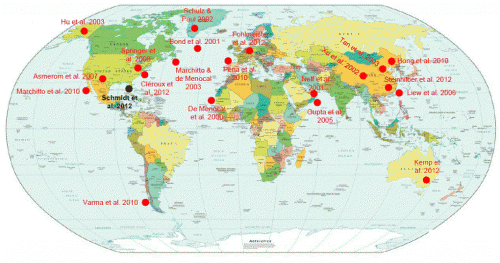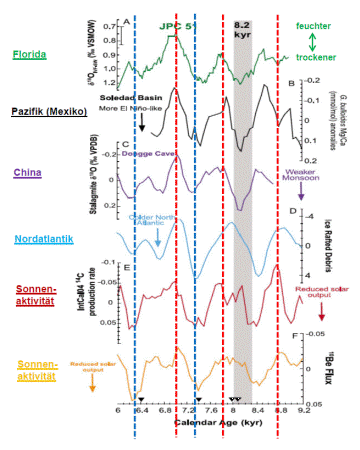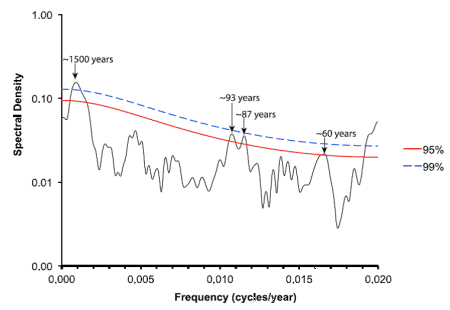|
15 August 2012
from
NoTricksZone Website
The climate of the last 10,000 years has not been as stable as leading IPCC scientists assume.
Over the last 10 years there has been a flurry of papers from studies conducted all over the world (Figure 1) and they reveal cyclic fluctuations of the climate on a 1000-year scale. The climate changes are synchronous with solar activity, which indicates that the sun is the main driver behind climate change.
The same can be said about the climate
over the last 1000 years, and for the recent warming of the 20th
century.
Overview of literature on solar activity and global millennial cycles.
Black dot indicates
the location of Matthew Schmidtís area of study of his recent
publication.
A team of scientists led by Matthew Schmidt of Texas A&M University studied a sediment core taken 200 meters below the sea surface in the Florida Strait. The core covers the last 10,0000 years of climate (see black dot in Figure 1).
The Gulf Stream passes through this
narrow strait on its way north, thus making it an important
connecting link between the tropics and the high Atlantic latitudes.
To answer that question the scientists
reconstructed the temperature development over the 3000 year period
using an array of techniques.
When the climate cooled in the North
Atlantic, along with other regions of the world, the rains failed
over the Florida Strait region. In the Pacific, the El NiŮo-events
become more frequent (Figure 2). Solar activity also set the beat in
other parts of the world, as confirmed by the results of studies by
Gerard Bond.
Here there are clearly recognizable
solar-driven climatic cycles on a millennial scale.
Climate development during the early post Ice Age was synchronous with solar activity (exception: cool phase 8200 years ago, marked with a gray bar). Phases of low solar activity led to cold temperatures in the North Atlantic and dry conditions over the Florida region (blue dashed lines). In periods of high solar activity (red dashed lines), Florida was wetter.
Schmidt and his colleagues interpreted
the 1500 year cycle as those that Gerard Bond described earlier. The
data set also contained the 60-year cycle, which likely mirrored the
Atlantic Decadal Cycle.
Frequency analysis of the oxygen isotope cycles of the sediment core for the period 9100 to 6200 years before today.
Are
the media going to report on this?
Donít hold your breath.
|



